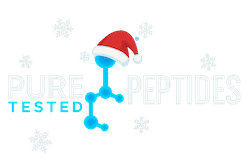MOTS-c vs. SLU-PP-332: How They Differ in Metabolic & Mitochondrial Effects
This page provides a comparative summary of what the literature reports about the mitochondrial-derived peptide **MOTS-c** and the synthetic ERR agonist **SLU-PP-332**—with an emphasis on how each influences mitochondrial signaling, energy usage, fuel selection, and metabolic health.
Overview: MOTS-c
MOTS-c (mitochondrial open reading frame of the 12S rRNA c) is a **16-amino-acid mitochondrial-derived peptide** that acts as a mitokine, influencing nuclear gene expression under metabolic stress. [oai_citation:0‡PMC](https://pmc.ncbi.nlm.nih.gov/articles/PMC9905433/?utm_source=chatgpt.com)
It responds to exercise and energy stress by modulating key signaling pathways (e.g. AMPK, AICAR) and influencing mitochondrial function, insulin sensitivity, and metabolic homeostasis. [oai_citation:1‡ScienceDirect](https://www.sciencedirect.com/science/article/pii/S1550413115000613?utm_source=chatgpt.com)
Overview: SLU-PP-332
SLU-PP-332 is a **synthetic agonist of the estrogen-related receptor (ERR)** family that mimics exercise-like mitochondrial and metabolic effects in preclinical models. [oai_citation:2‡PubMed](https://pubmed.ncbi.nlm.nih.gov/37739806/?utm_source=chatgpt.com)
It acts as an “exercise mimetic,” enhancing energy expenditure, fatty acid oxidation, improving mitochondrial gene programs (e.g., via PGC-1α), and reducing fat accumulation. [oai_citation:3‡PMC](https://pmc.ncbi.nlm.nih.gov/articles/PMC10801787/?utm_source=chatgpt.com)
Key Differences in Metabolic & Mitochondrial Effects
https://youtu.be/xl9ff0rHbA8?si=_eXs_6c4TK3yKD1v
| Feature / Domain | MOTS-c | SLU-PP-332 |
|---|---|---|
| Primary signaling axis | Activates AMPK via AICAR accumulation (via inhibition of purine synthesis / folate cycle) → metabolic gene modulation [oai_citation:4‡PubMed](https://pubmed.ncbi.nlm.nih.gov/25738459/?utm_source=chatgpt.com) | Stimulates ERR/PGC-1α transcriptional axis → mitochondrial biogenesis, oxidative metabolism, and fuel utilization shifts [oai_citation:5‡ujpronline.com](https://ujpronline.com/index.php/journal/article/view/1355?utm_source=chatgpt.com) |
| Fuel selection / RER changes | MOTS-c treatment in mice lowers RER (increased fat oxidation) and elevates heat production under some conditions [oai_citation:6‡PubMed](https://pubmed.ncbi.nlm.nih.gov/25738459/?utm_source=chatgpt.com) | SLU-PP-332 reduces RER (shifts toward fatty acid oxidation) and increases resting energy expenditure without increasing activity [oai_citation:7‡PMC](https://pmc.ncbi.nlm.nih.gov/articles/PMC10801787/?utm_source=chatgpt.com) |
| Effect on fat mass / adiposity | In HFD mice, MOTS-c prevents obesity, reduces weight gain, improves insulin resistance [oai_citation:8‡PubMed](https://pubmed.ncbi.nlm.nih.gov/25738459/?utm_source=chatgpt.com) | SLU-PP-332-treated obese mice show fat mass reduction, smaller adipocytes, reduced hepatic steatosis [oai_citation:9‡PMC](https://pmc.ncbi.nlm.nih.gov/articles/PMC10801787/?utm_source=chatgpt.com) |
| Mitochondrial adaptation / biogenesis | MOTS-c is considered a mitokine that signals mitochondrial-nuclear crosstalk under stress; may enhance mitochondrial resilience over time [oai_citation:10‡Physiology Journals](https://journals.physiology.org/doi/full/10.1152/ajpendo.00249.2020?utm_source=chatgpt.com) | SLU-PP-332 upregulates mitochondrial genes (via ERR/PGC-1α), increases mitochondrial respiration in vitro and oxidative fiber shift in muscle [oai_citation:11‡ResearchGate](https://www.researchgate.net/publication/374126809_A_Synthetic_ERR_Agonist_Alleviates_Metabolic_Syndrome?utm_source=chatgpt.com) |
| Onset & targeting | Acts endogenously and is inducible by exercise; local/stress-sensitive signaling in tissues [oai_citation:12‡Nature](https://www.nature.com/articles/s41467-020-20790-0?utm_source=chatgpt.com) | Pharmacologic agonist with systemic exposure; not exercise-dependent and effective even without increased activity [oai_citation:13‡EurekAlert!](https://www.eurekalert.org/news-releases/1002687?utm_source=chatgpt.com) |
| Longevity / resilience relevance | MOTS-c is linked to metabolic resilience, potential aging benefits, and improved performance in aged mice [oai_citation:14‡Nature](https://www.nature.com/articles/s41467-020-20790-0?utm_source=chatgpt.com) | SLU-PP-332 is proposed as an exercise mimic potentially useful in aging/metabolic disease models, but direct longevity data are limited so far [oai_citation:15‡PubMed](https://pubmed.ncbi.nlm.nih.gov/37739806/?utm_source=chatgpt.com) |
Implications & Use in Experimental Design
Because MOTS-c is a native mitochondrial peptide, it aligns more closely with endogenous stress and exercise signaling. Its effects may be most effective when tissue stress or metabolic challenge is present (e.g., HFD, aging models).
SLU-PP-332, by contrast, provides a pharmacologic “exercise mimic” stimulus even in sedentary or inactive contexts, driving mitochondrial gene programs via ERR activation.
When designing comparative studies, consider dosing timing, tissue specificity (muscle, liver, adipose), endpoints such as gene expression (AMPK targets, ERR/PGC-1α targets), indirect calorimetry (RER, energy expenditure), and histologic / mitochondrial assays.
For lab procurement and to maintain consistency:
MOTS-c 10 mg — Research Use Only
References
- Lee C, et al. *The mitochondrial-derived peptide MOTS-c promotes metabolic homeostasis and reduces obesity and insulin resistance.* Cell Metabolism. 2015;21(3):443-454. [oai_citation:16‡PubMed](https://pubmed.ncbi.nlm.nih.gov/25738459/?utm_source=chatgpt.com)
- Billon C, et al. *A Synthetic ERR Agonist Alleviates Metabolic Syndrome.* J Pharmacol Exp Ther. 2024; published online. [oai_citation:17‡PMC](https://pmc.ncbi.nlm.nih.gov/articles/PMC10801787/?utm_source=chatgpt.com)
Compliance & Research-Only Notice
Pure Tested Peptides provides compounds strictly for laboratory research use only.
All content above is for educational and scientific discussion. These products are not medicines,
not intended for human consumption, and have not been evaluated or approved by the FDA to diagnose, treat,
cure, or prevent any disease.
